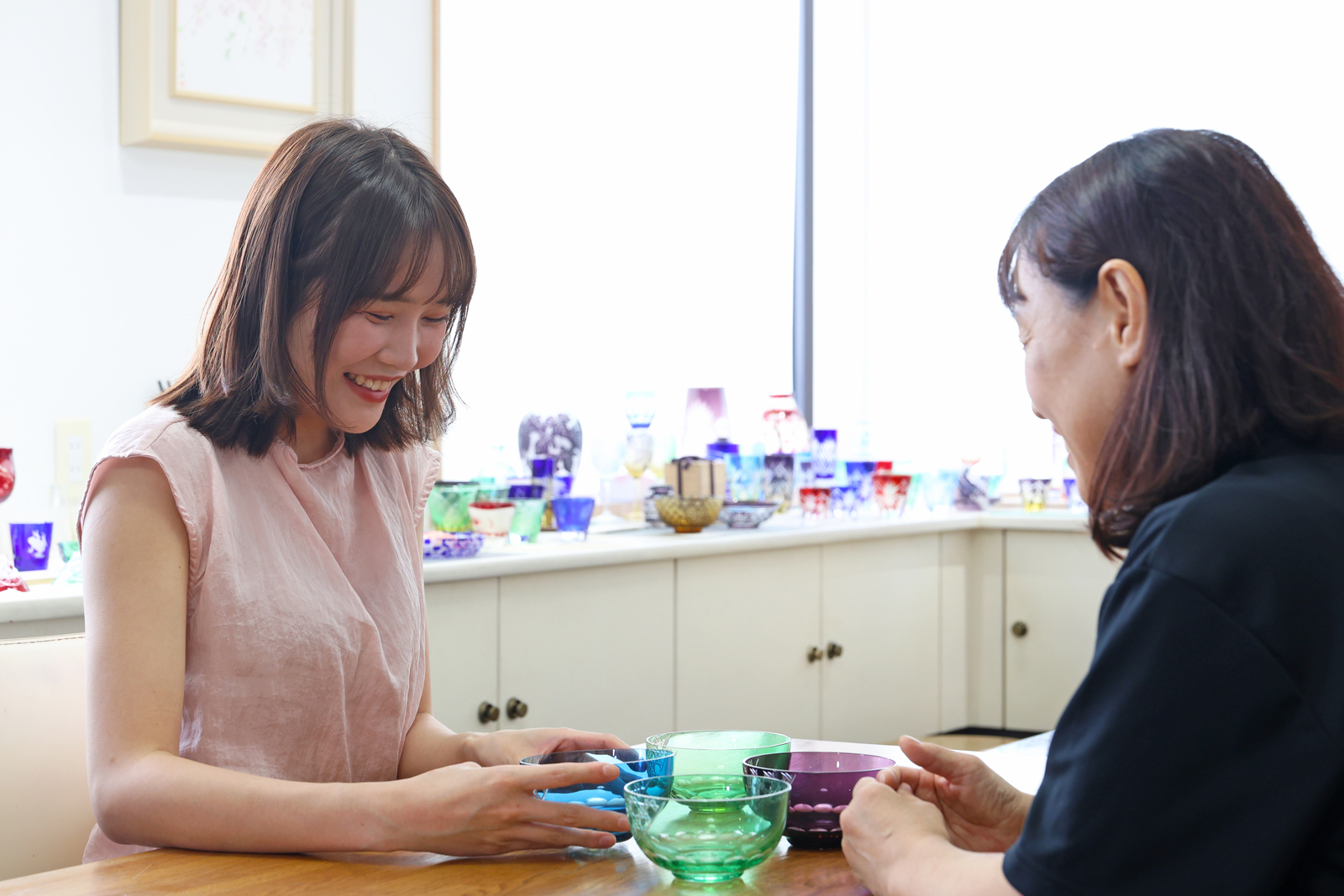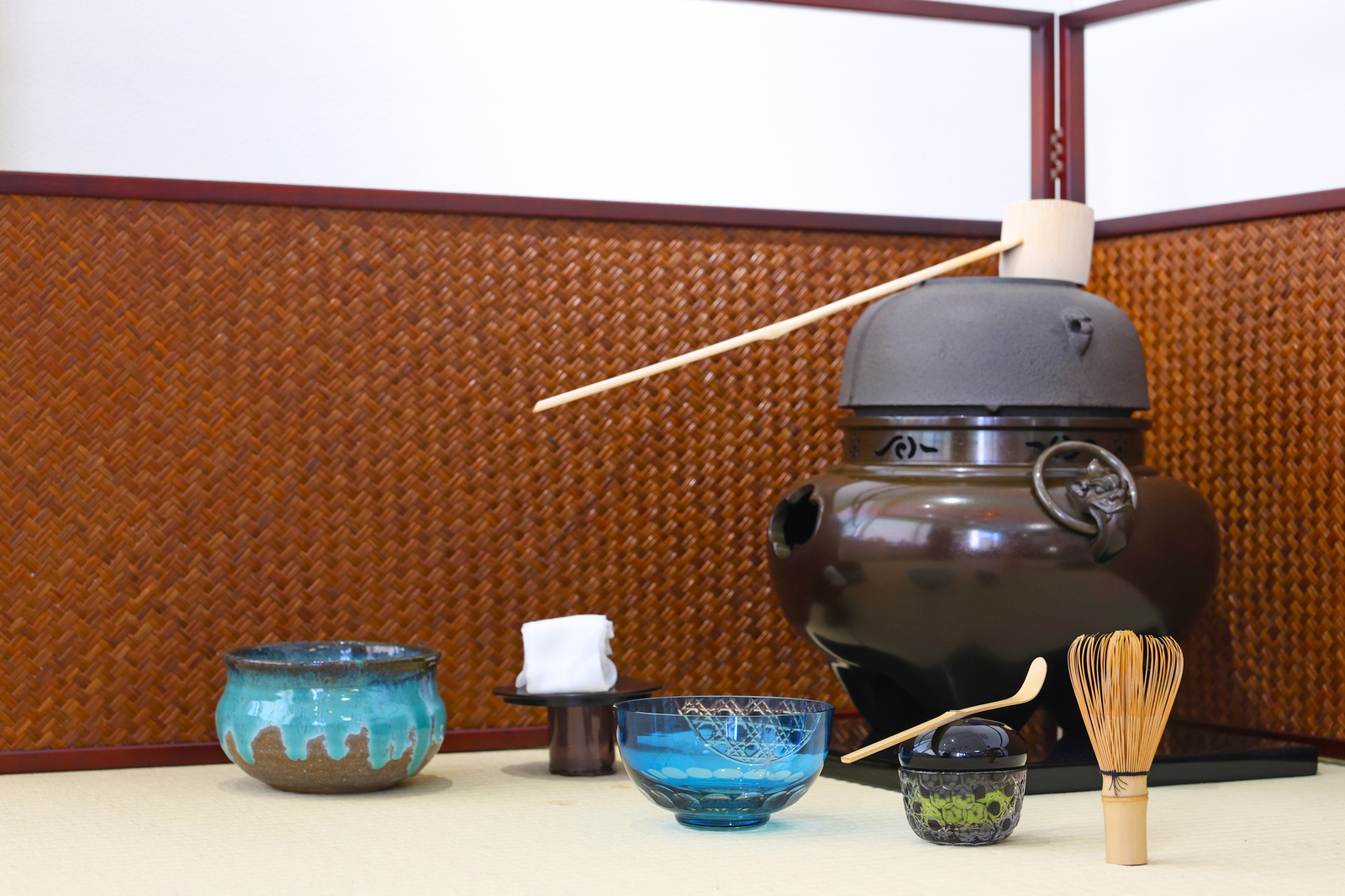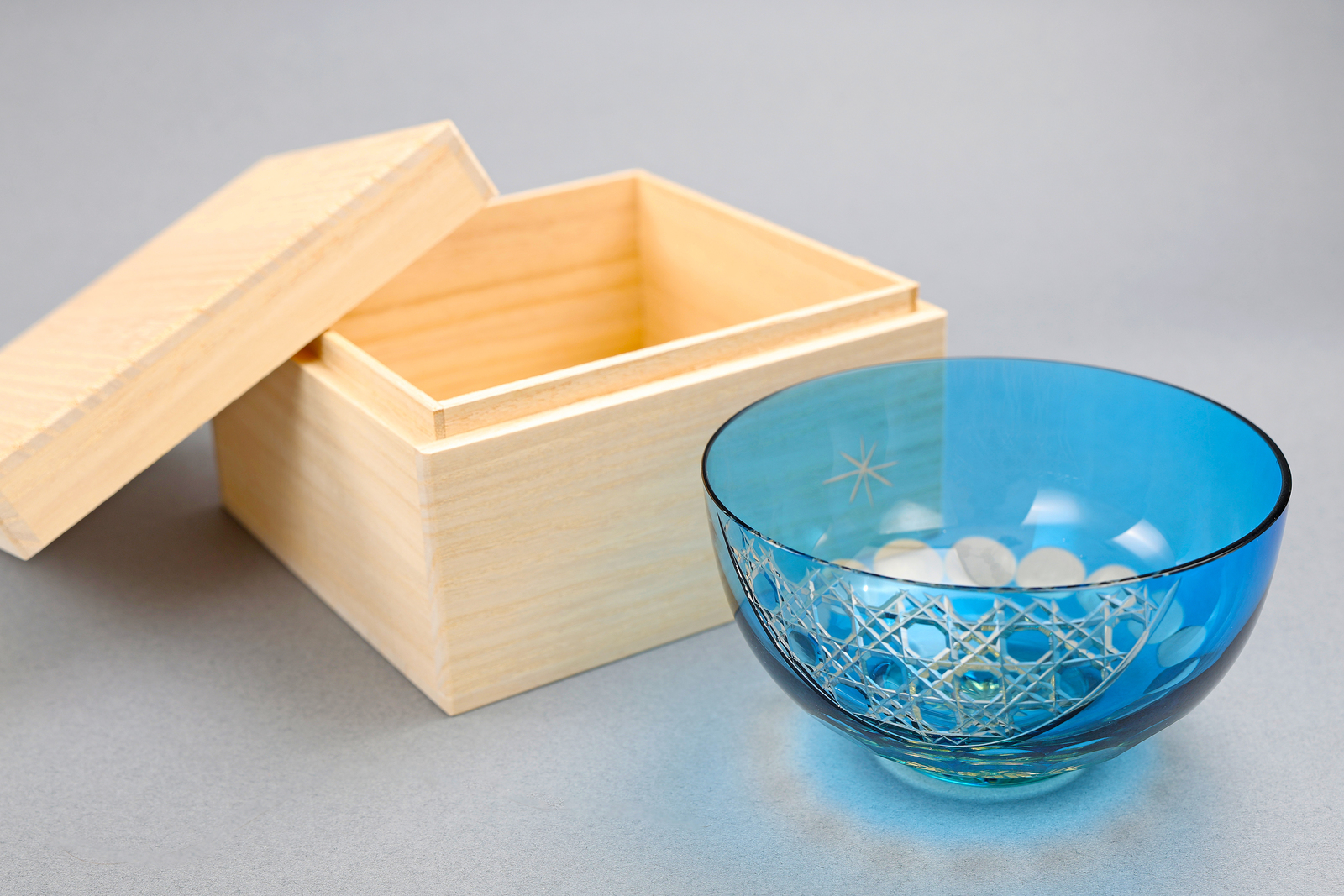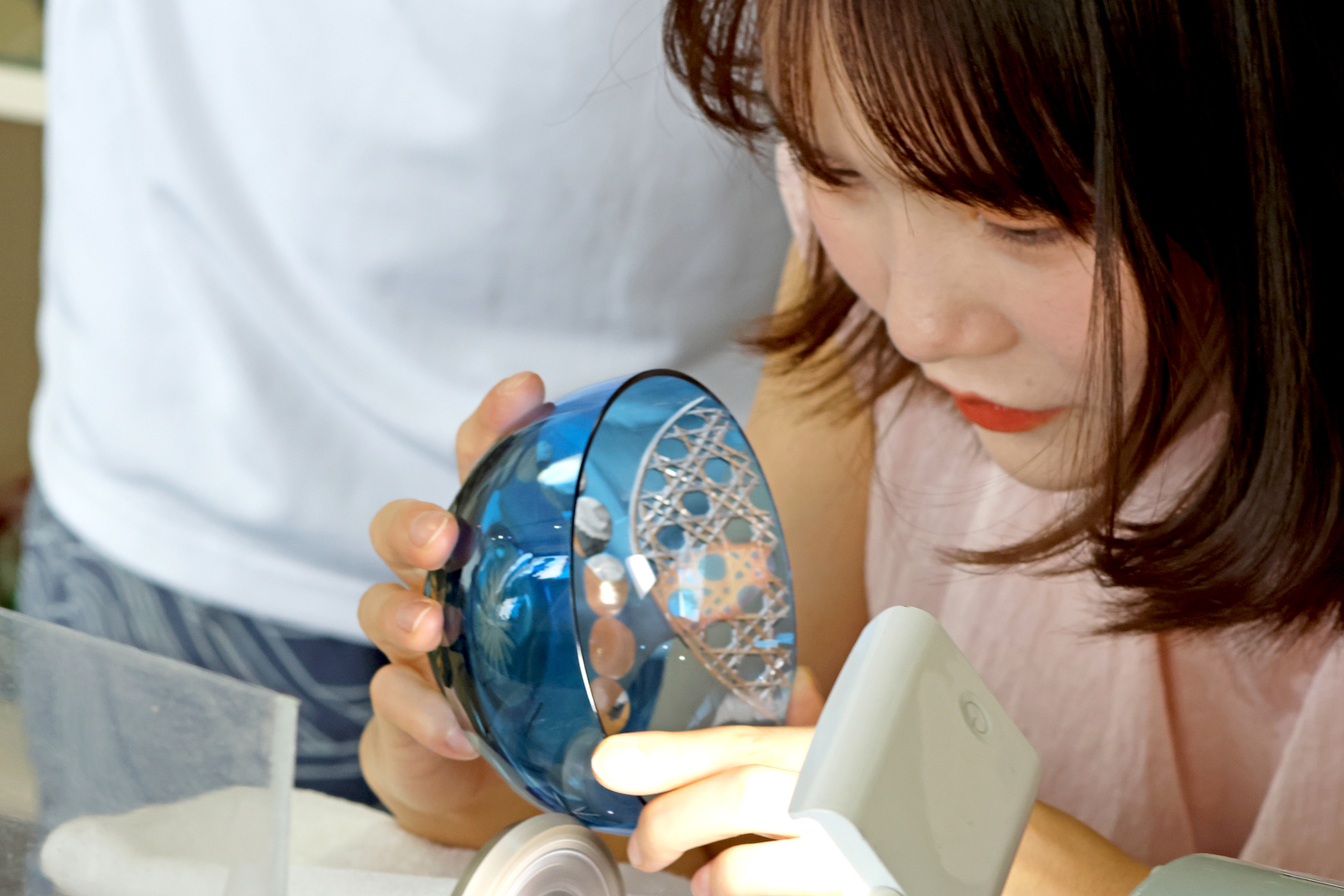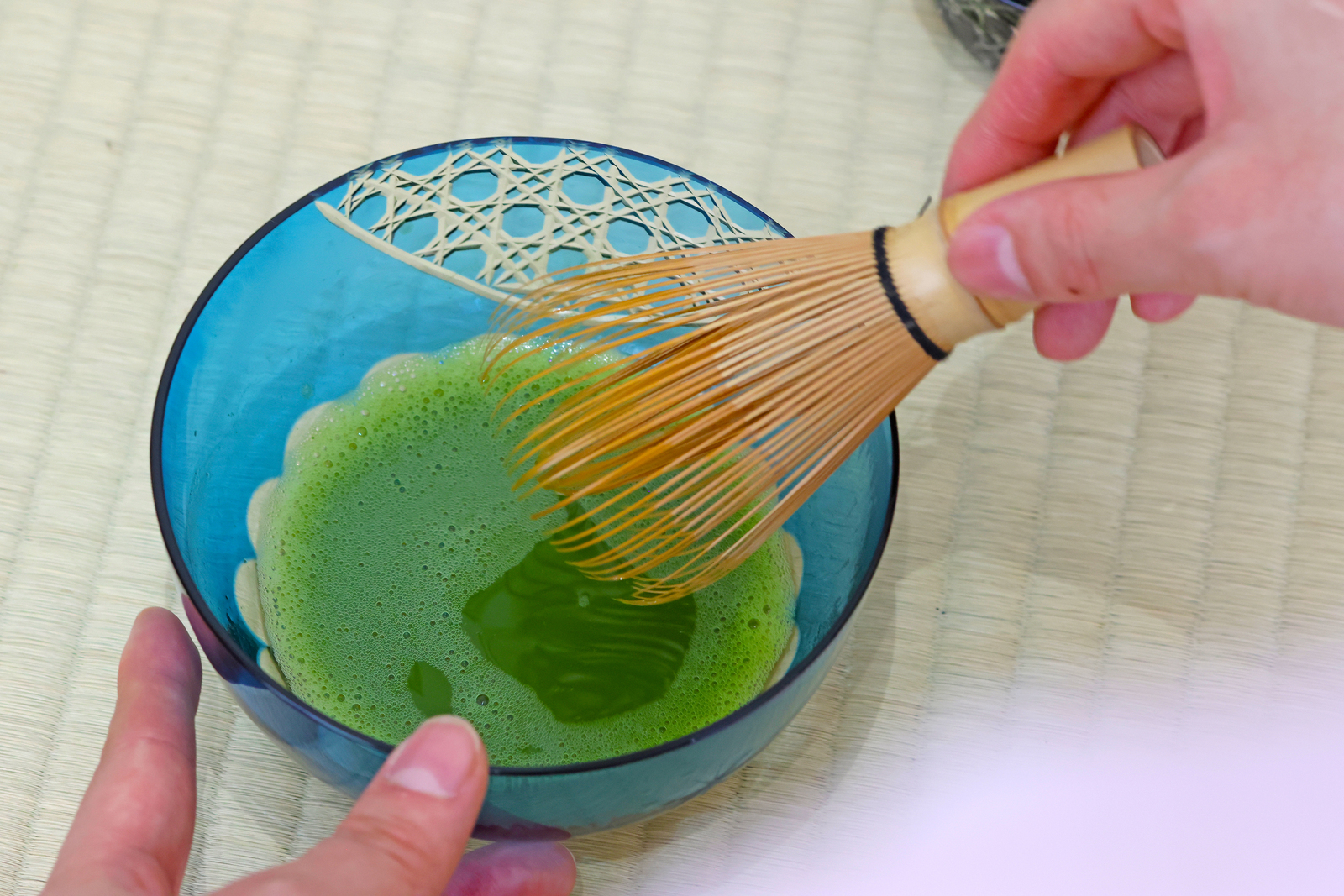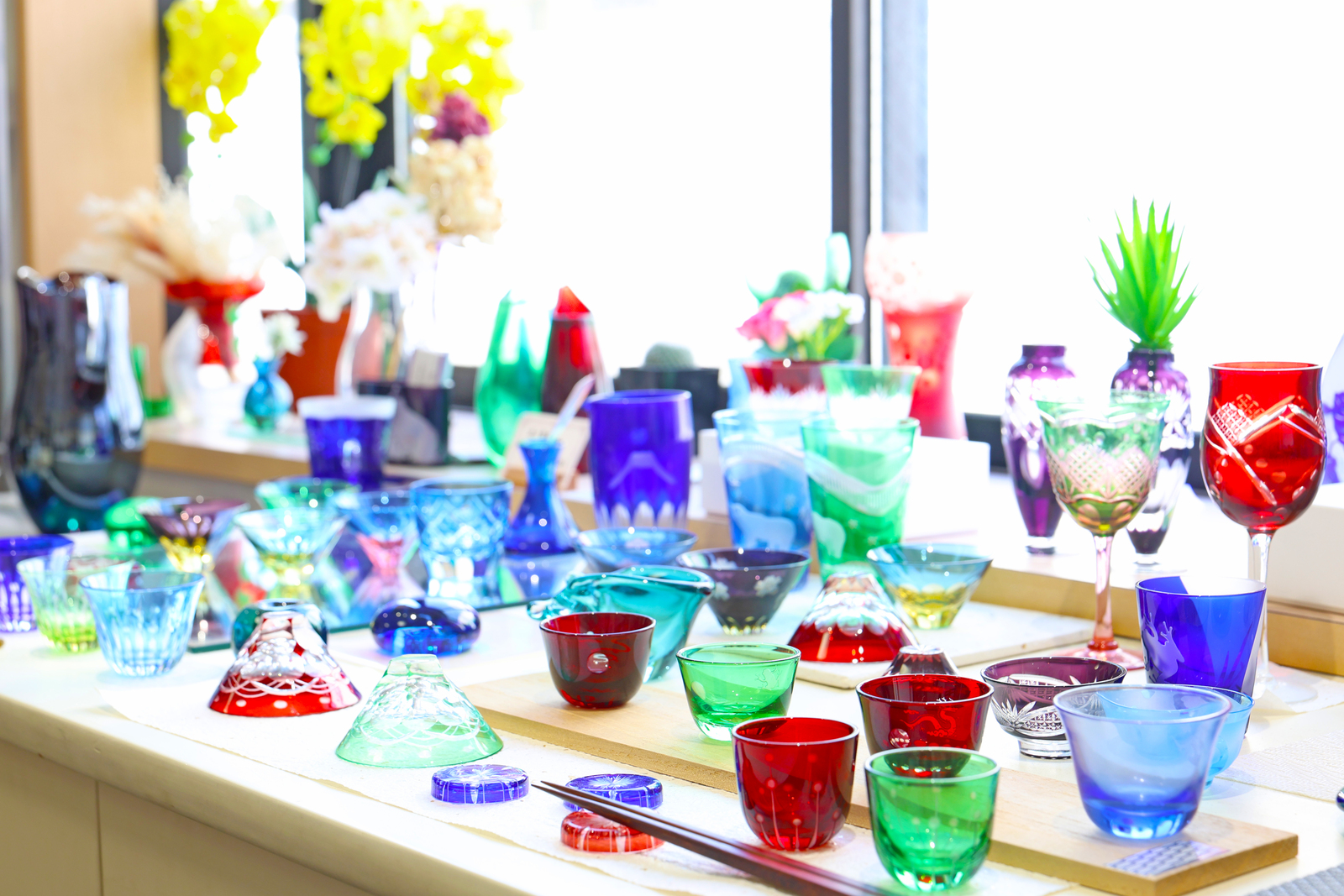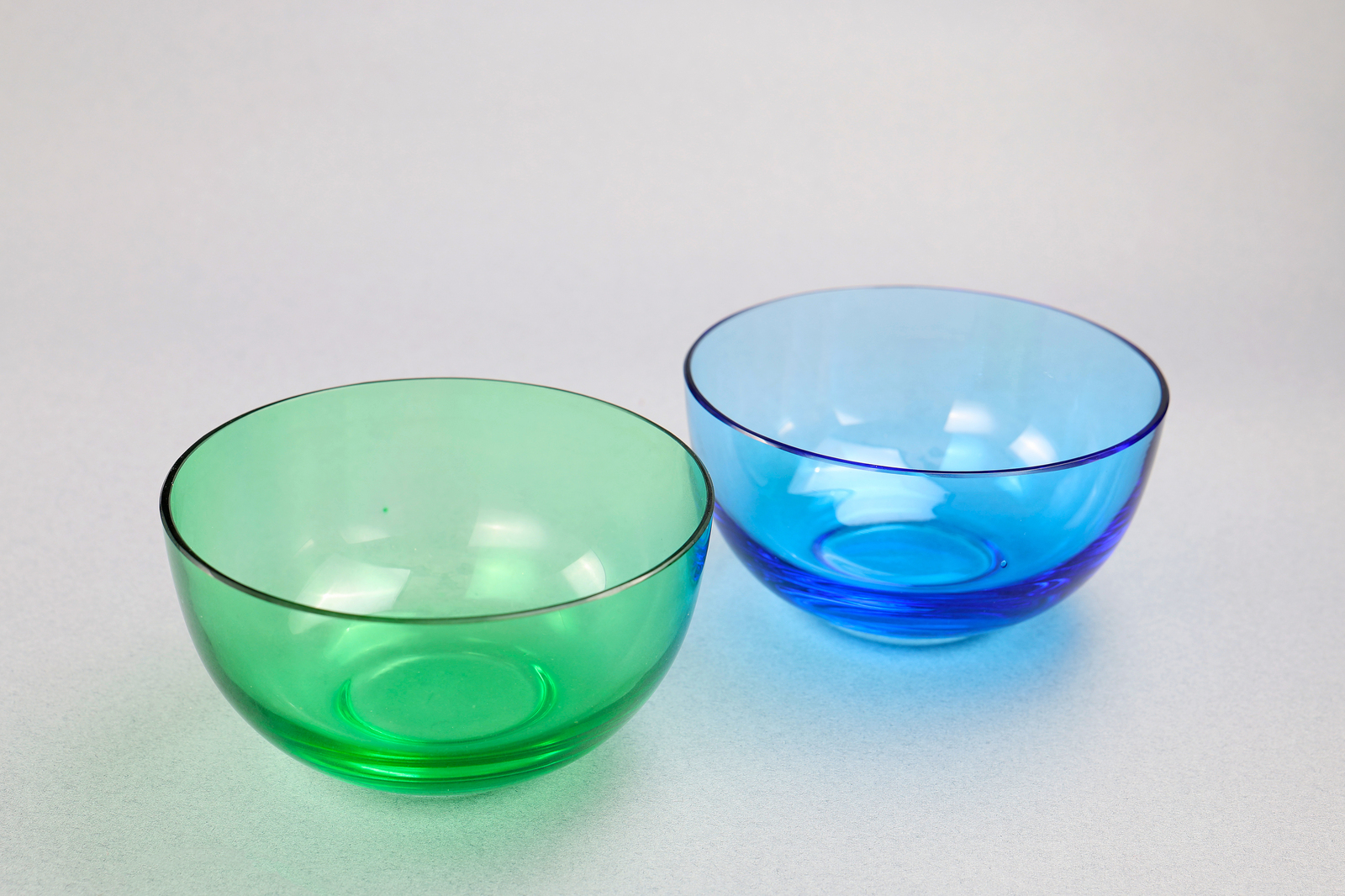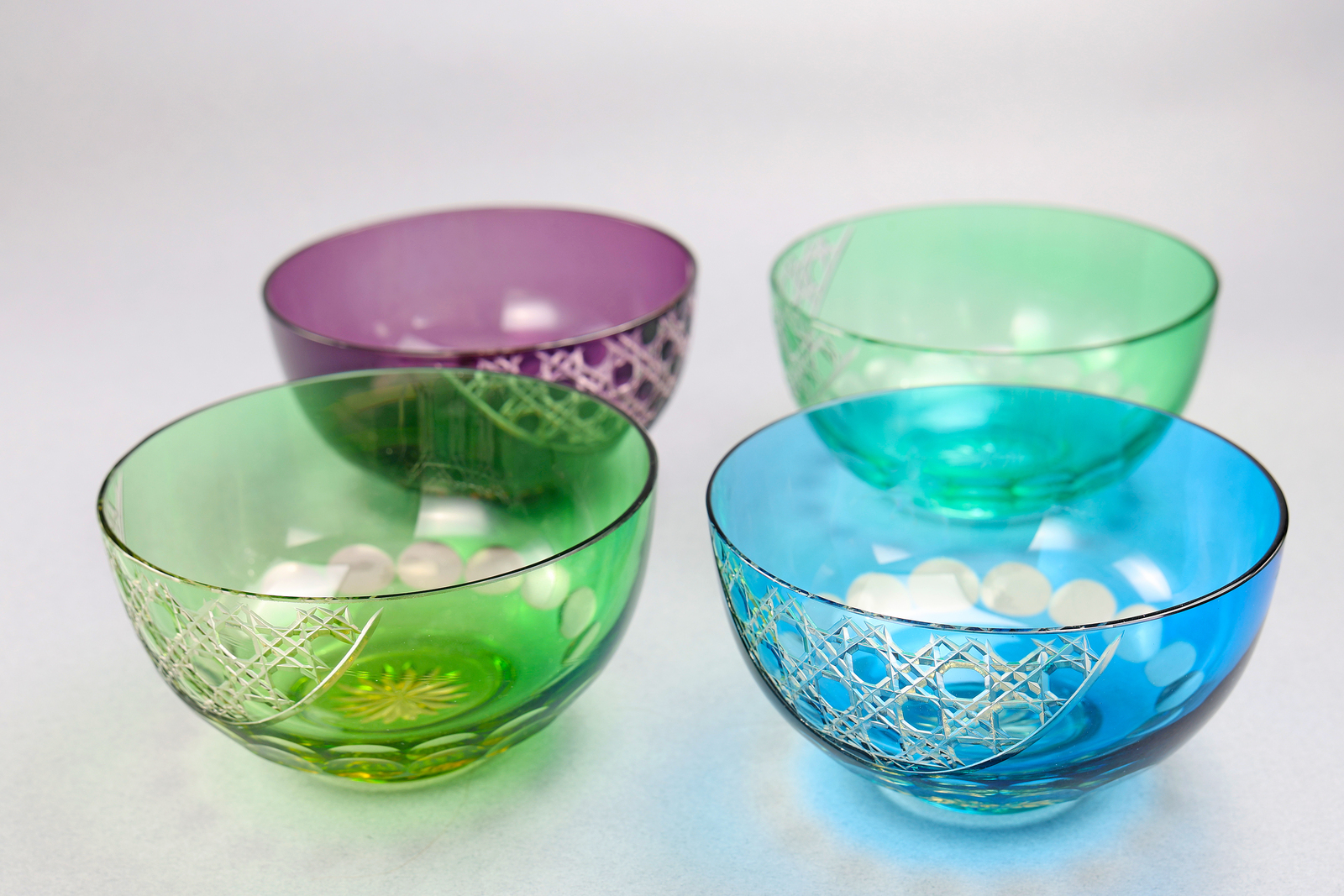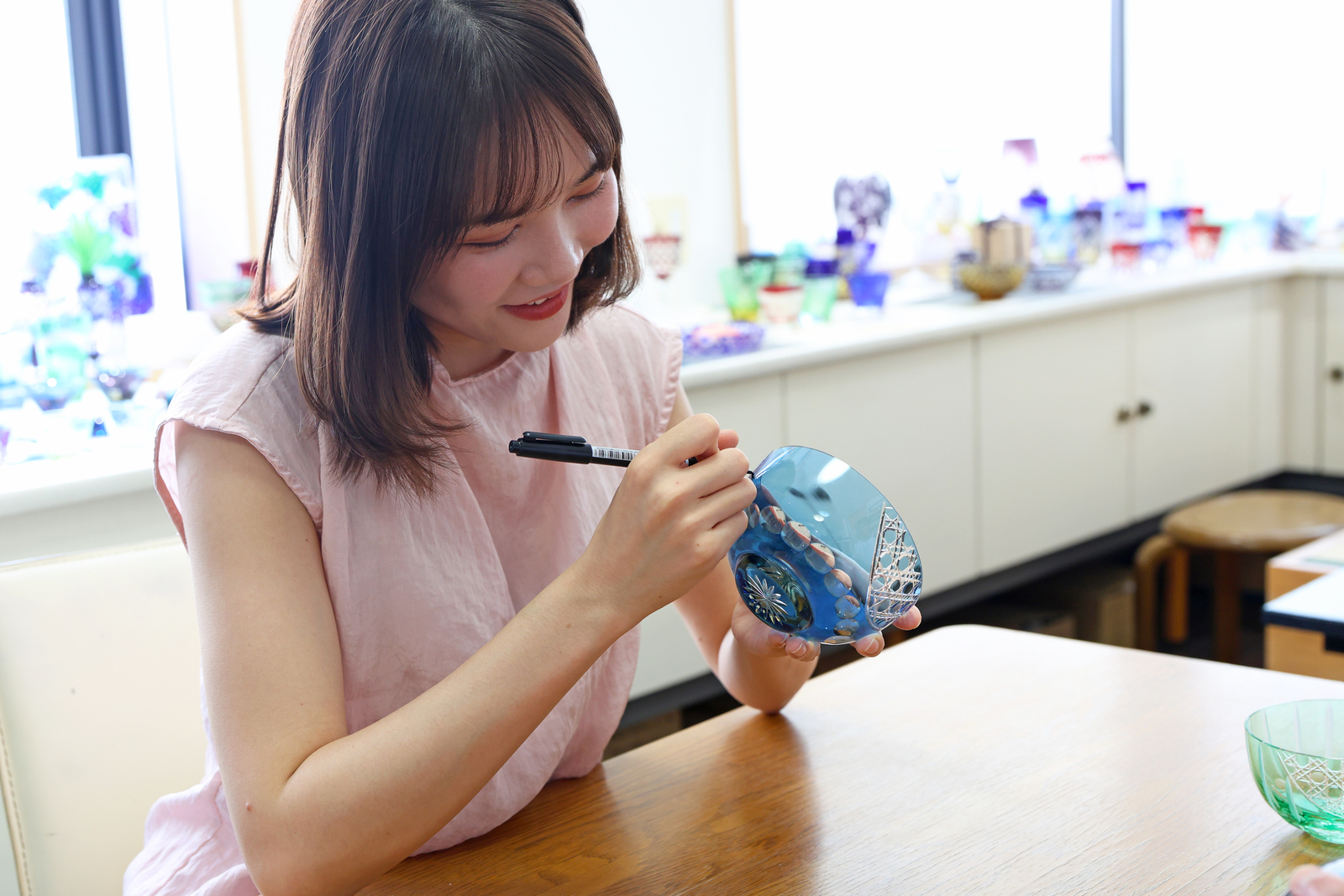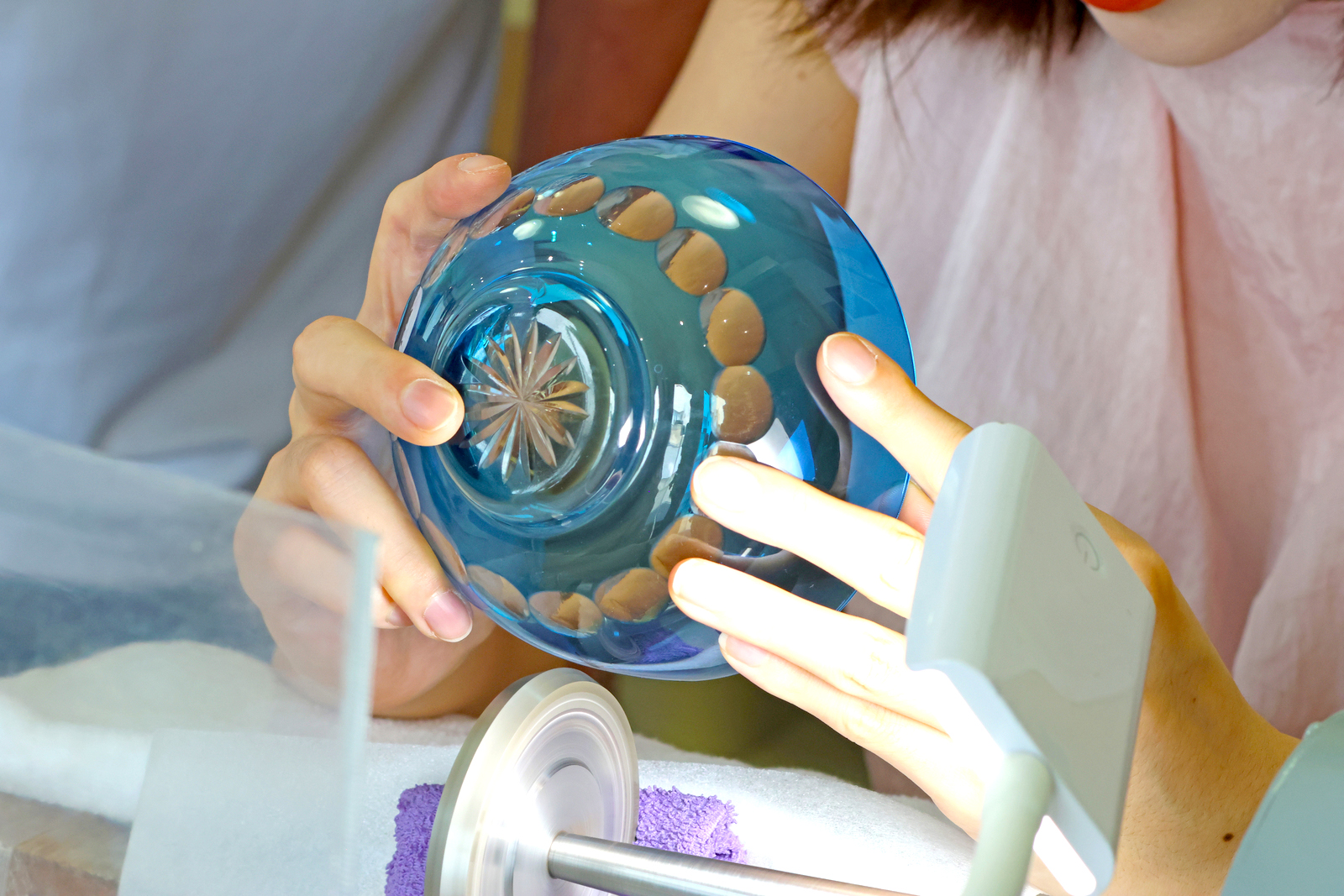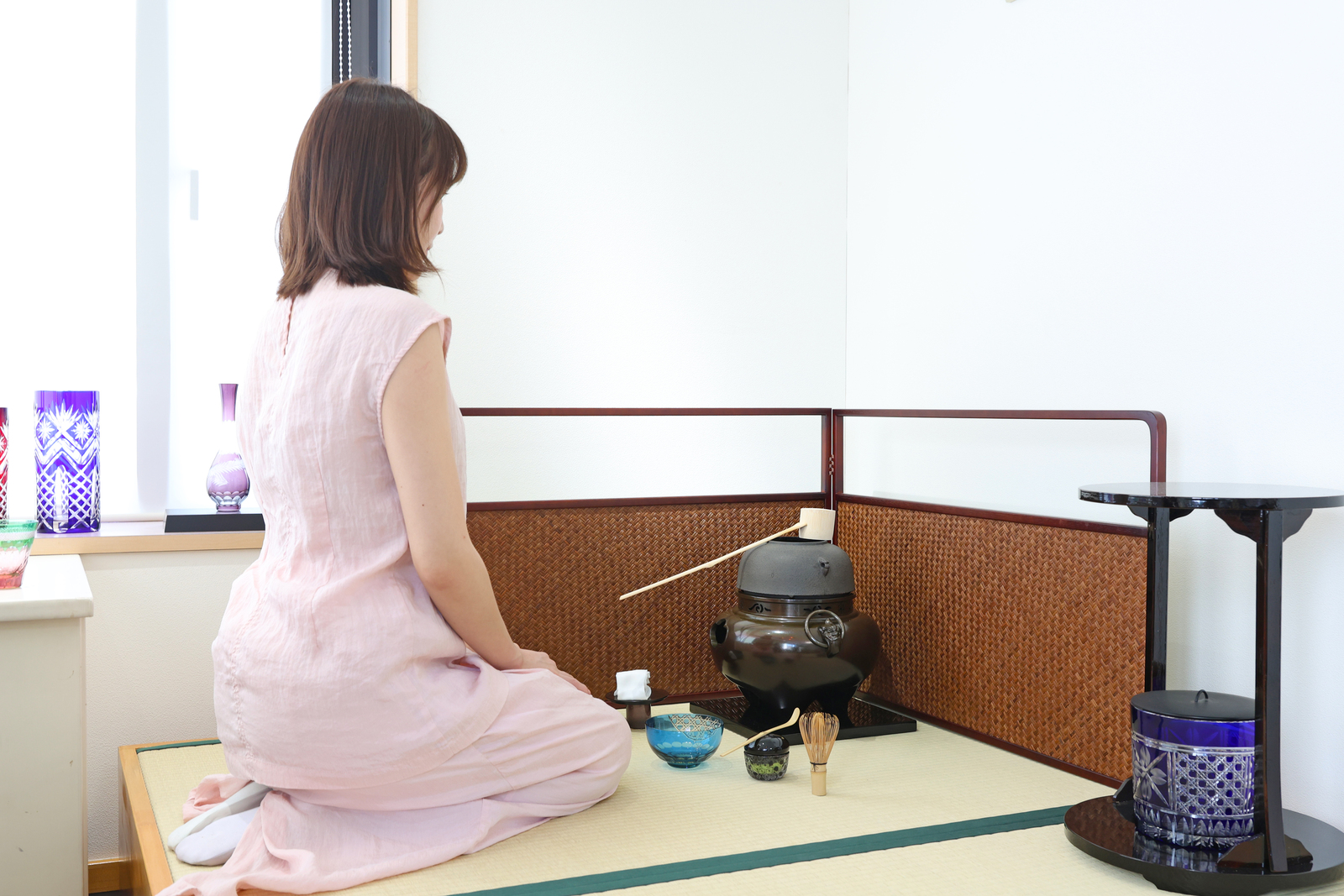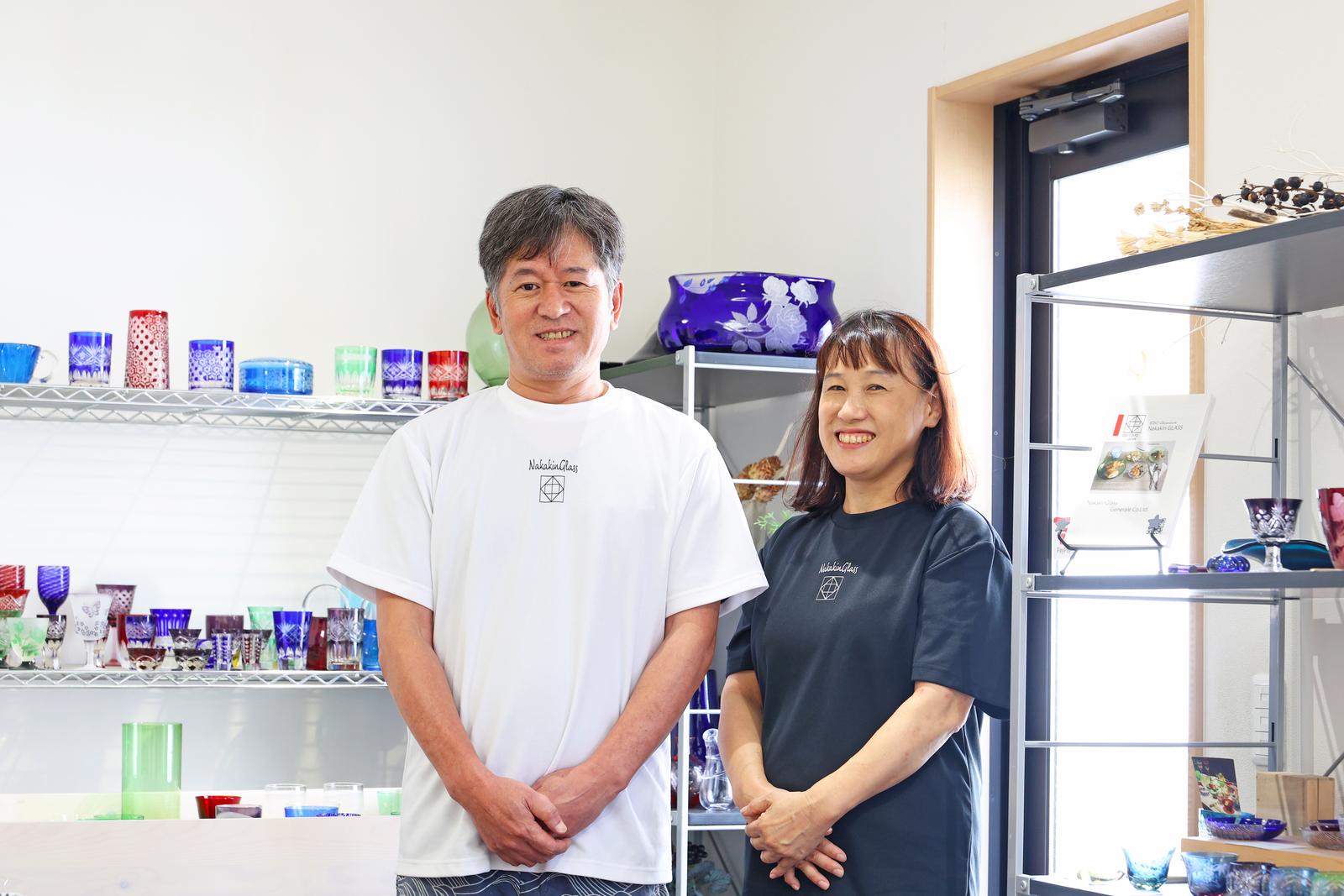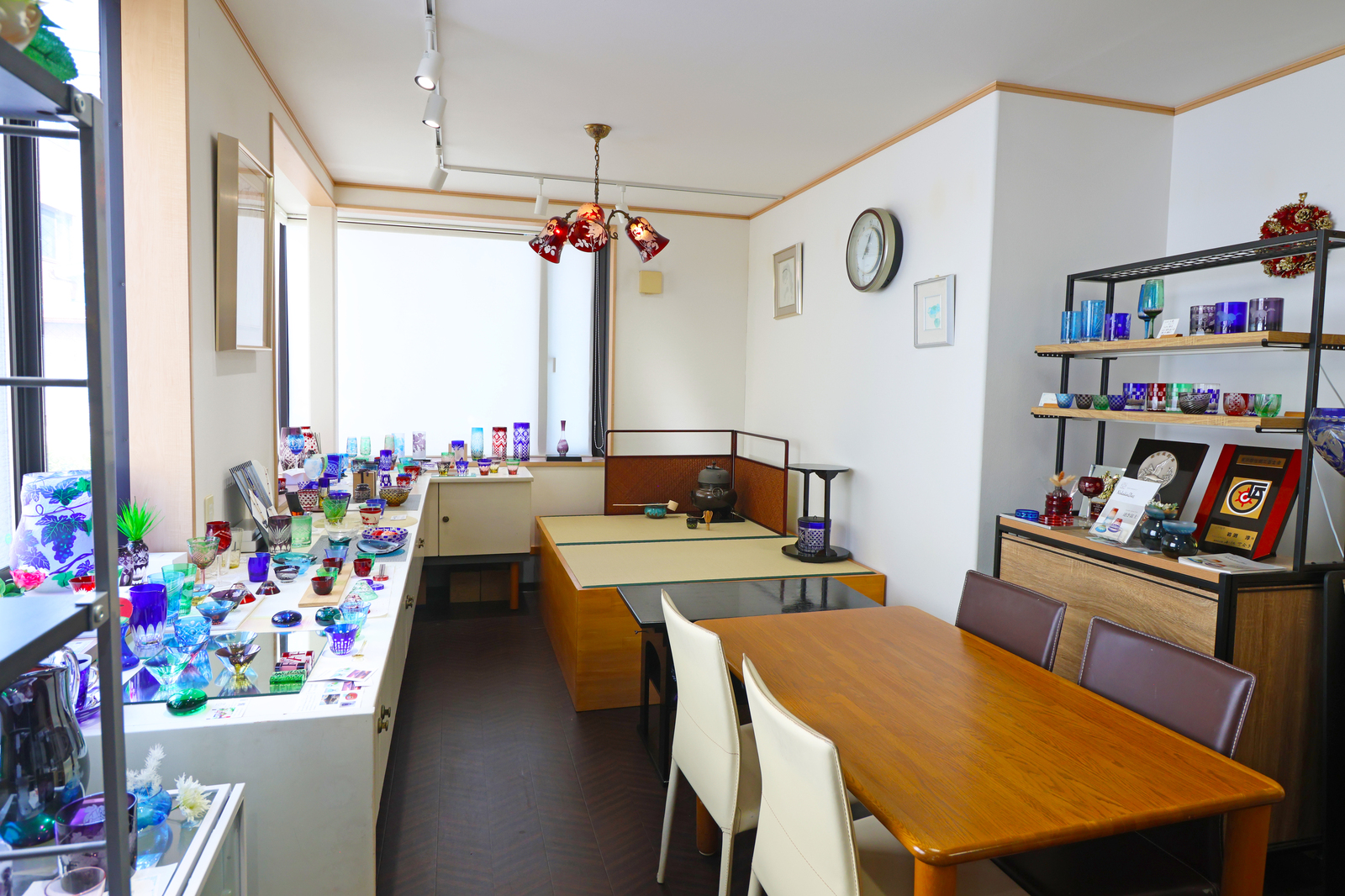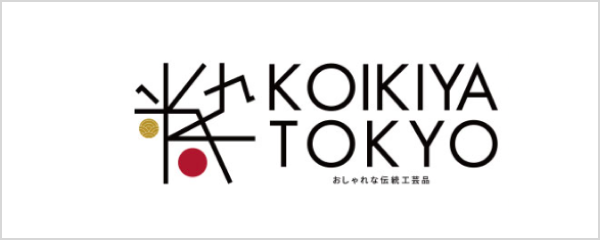Edo-glass, meticulously crafted by artisans who carry on the tradition of Edo-glass
The origins of Edo-glass are said to date back to the early 18th century, when mirrors, eyeglasses, hairpins, wind chimes, and other items were crafted in Nihonbashi and Asakusa in Tokyo. Around the late 19th century, the introduction of modern European technology enabled the production of everyday tableware, bottles, and scientific instruments such as thermometers and hydrometers, leading to the development of this area as a local industry in Tokyo.
Edo-glass is crafted by artisans who draw molten glass from a rod and shape it using one of three techniques: free-blowing, mold-blowing, or pressed molding. Unlike machine-produced glass products, each piece is individually shaped by an artisan winding glass onto a rod. This means no two pieces share the same color or shape, unlocking the unique character that comes with handmade craftsmanship. Only five workshops remain today that carry on these traditional techniques.
Iro-Gise glass, two-layer color overlay glass born from proprietary research and development
Nakakin Glass Inc. was founded by Kingo Nakamura, the first-generation workshop head, in 1946, in Hirai area of Edogawa-ku, Tokyo. Iro-Gise glass, a color overlay glass, is made by blowing thin colored glass and then adding another layer of 0.2 to 0.3 mm thin color glass as an overlay. This style has become synonymous with Nakakin Glass Inc. It is particularly renowned for the coloration achieved by the overlay process and characterized by the natural hues produced when ores and metals are heated. Experience those beautiful hues for yourself during the activity.
Nakakin Glass Inc. produces Iro-Gise color overlay glass using what is called the Pokan Method. This production method involves applying a thin layer of colored glass to the exterior, placing it in a heated kiln, and then fusing glass of another color onto the interior. It was the first devised in Japan by Kingo Nakamura, the company founder. Incidentally, the word, Pokan originates from the sound made when removing glass from a kiln.
A Kiriko cut-glass activity using a Matcha tea bowl that features the unique color of Edo-glass
Your activity starts with watching a video explaining the production process of Edo-glass and the techniques used in Iro-Gise color overlay glass. Then, choose one out of the four colors of Matcha tea bowls. The Matcha tea bowls cups feature Kiriko cut-glass crafted by artisans beforehand, subsequently those four colors will be revealed and a surprise for you on the day of the activity. Each Matcha tea bowl is handcrafted by artisans, so while the colors may appear similar at first glance, they actually feature subtle variations.
Once you've chosen your Matcha tea bowl’s color, next use samples as a reference to decide on a pattern for your tea bowl. Then, use a pen to draw the pattern. Among the traditional patterns, many people choose relatively simple chrysanthemums, but you can also freely arrange other elements such as incorporating straight or diagonal lines throughout, combining lines with stars, or adding circles of various sizes.
Finish your own special Edo-glass Matcha tea bowl with Kiriko cut-glass detailing
Once you've drawn the pattern and completed the preliminary work, the next step is the Kiriko cut-glass activity at a worktable. Before carving into your own Matcha tea bowl, watch an artisan demonstration. After that, first try cutting on another piece of glass to get a feel for the pressure and technique.
Hold your Matcha tea bowl firmly with both hands and place your arms securely on the platform. Press the pattern section horizontally against the outer tip of the blade and carve into the glass. The key is to press lightly for thin lines and a bit harder for thick lines. The best way to do it is to start with light pressure, gently pressing down while gradually moving up and down to complete the pattern.
At the end of your activity, it is time to move to the Tatami mat space in the workshop. Enjoy the tea ceremony activity of whisking tea in your Matcha tea bowl. This tea ceremony activity also serves as a demonstration of pouring actual hot water into the Edo- glass Matcha tea bowl you have adorned to experience its heat resistance firsthand. Experience Japanese tradition and culture, then enjoy a moment of relaxation.
Edo-glass adds a touch of elegance to all sorts of everyday moments
Edo-glass incorporates an array of creative innovations by modern artisans while preserving traditional techniques. "Through Kiriko cut-glass activities, we hope visitors will experience the techniques artisans have honed over generations in Edo-glass, along with its brilliance, color, translucency, and vividness," commented Michiko Iwabuchi, a director of Nakakin Glass Inc.
The Edo-glass Matcha tea bowl, featuring the original and traditional Kiriko cut-glass techniques, serves a rich variety of purposes. For example, it can be used to serve Somen or Soba noodles, as a salad bowl, or may be perfect as a small item container, too. Enjoy incorporating Edo-glass into your dining table and interior decor.
It was first founded in 1946 under the name of Nakakin Seisakujo, in Hirai, Edogawa-ku. Its core production is Iro-Gase glass, created by layering two colors of glass during the blowing process. It offers a diverse range of products including glasses, sake vessels, and vases. Nakakin Glass contributes to the promotion of Edo-glass by developing original ideas and designs, as well as through efforts such as developing new products in the Edogawa Traditional Crafts Industry-Academia-Public Project and participating in several community events.
